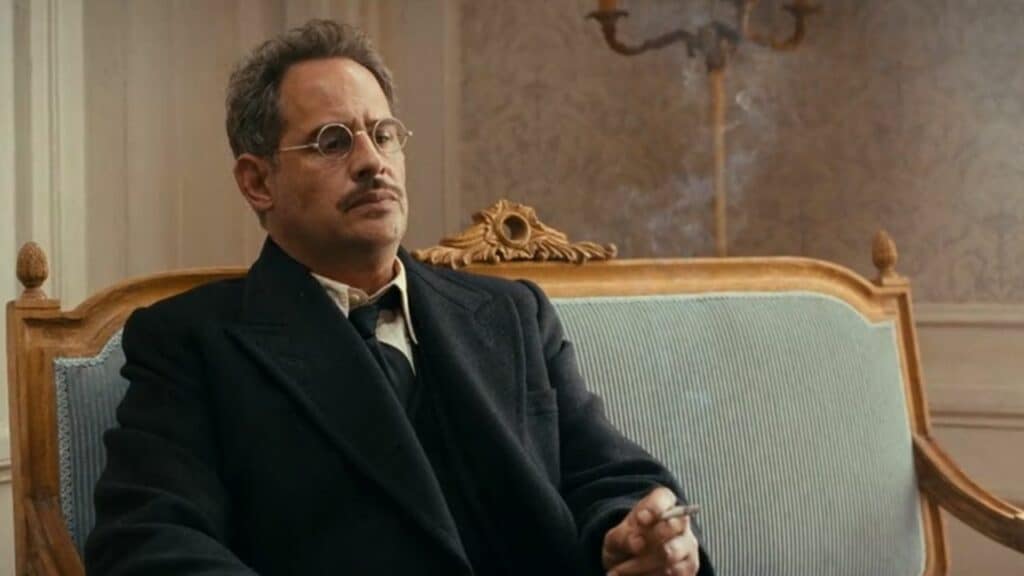Inspired by real people and events, Transatlantic revolves around the efforts of the American Emergency Rescue Committee to rescue artists and intellectuals from the Nazis during the Second World War.
During World War II, when Germany was invading countries in Europe, the Jewish population of the continent found itself in danger. The Holocaust or the genocide of the European Jews took the lives of millions of Jews.
Apart from the Jews, the Nazis targeted artists, writers, and intellectuals who posed a threat to the fascist regime. The Nazis were targeting those whose works were considered “degenerate art”.
This was also the time when several common people turned into heroes to save the lives of innocent people. Transatlantic, based on Julie Orringer’s The Flight Portfolio, is a show that tells the story of a few of them and the lives that they saved.
The Emergency Rescue Committee
When Germany occupied the north of France, the American Emergency Rescue Committee (ERC) was operating in the south of France in Marseille.
An American journalist, Varian Fry, went to Marseille to represent the ERC to save those Jewish and anti-Nazi artists and intellectuals who were on the blacklist of the Nazis.
As seen in the show, Fry and the ERC operated from Villa Air-Bel. They hid the refugees there and arranged American visas to help them escape France. Fry used several other measures that were not always legal to smuggle people out of France.
Due to this, Fry was made to leave France in 1941, putting an end to his rescue operation in Marseille. Later, Fry was among the first five people from his country to be recognized as “Righteous Among the Nations” for his efforts to save these refugees.
The character of Mary Jayne Gold is also based on a historical figure. She was an American heiress who chose to stay in Marseille and help the ERC instead of going back home to safety.
She returned to the US only in 1941 and wrote a memoir, Crossroads Marseilles 1940, about her experiences during the war. However, it is not known if she was ever in love with Albert Hirschman, as seen in the show.
Albert Hirschman resisted fascism and worked with the ERC in his real life also. He went on to become an economist as well as an author. He wrote several books on political economy and political ideology.
Lisa Fittko also worked for the ERC. She found a route that provided a way to smuggle refugees out of France without getting noticed by the authorities.

Lisa and her husband, Hans, eventually escaped to Cuba and then to the US. Lisa also wrote two memoirs, Escape through the Pyrenees and Solidarity and Treason: Resistance and Exile, 1933-1940, documenting her work.
Then there was Hiram “Harry” Bingham IV, the US Vice Consul in Marseilles. While the U.S. State Department was not in favor of helping refugees for several reasons, Bingham went out of his way to help as many refugees as he could.
He even sheltered a refugee, Lion Feuchtwanger, in his house, despite the danger. Due to all these factors, Bingham was transferred to Portugal; he was not fired. However, he later resigned from the Foreign Services.
Wilhelm Spira, a Jewish cartoonist, used the pseudonym Bill Freier and forged documents for the ERC to help them get the refugees out of France. He never got the US visa himself and was taken to Auschwitz concentration camp. However, he survived and spent the rest of his life in Paris.
The ERC and the volunteers risked everything to help refugees escape France, and they succeeded in helping more than 2000 people, which included famous personalities. Their work was dangerous but also very crucial.
The artists and intellectuals in Transatlantic
As mentioned above, the ERC saved several artists and intellectuals. Some of them are seen in the show. In the very first episode, the audience is introduced to Walter Benjamin, a Jewish philosopher, critic, and essayist.

Benjamin did cross the French–Spanish border with the group led by Lisa Fittko but was held back by Spanish authorities. Fearing that the group would be deported back to France, Walter took his life by overdosing on morphine tablets.
Max Ernst was an artist and a poet; he was one of the artists who introduced the Dada movement and Surrealism in Europe. He was arrested twice while living in France, but he managed to escape France with the help of Fry and Peggy Guggenheim.
Peggy Guggenheim was an American heiress and an art collector. She not only helped Max Ernst flee to the US but also married him in 1941. Today, Guggenheim is known for the Peggy Guggenheim Collection, a modern art museum.
Luise Strauss-Ernst was a Jewish art historian, writer, journalist, and artist. She was Max Ernst’s first wife, but unlike him, she did not survive. In 1944, she was arrested and sent to Auschwitz concentration camp.
André Breton was a writer, poet, and principal theorist of Surrealism. He and his wife, Jacqueline Lamba, who was a surrealist artist, were able to escape to the US with their infant daughter with the help of ERC.
Victor Brauner was also a surrealist who had to leave Paris when the Germans invaded France. He moved to Marseille and was aided by Fry. He eventually moved back to Paris.
With ERC’s help, Marc Chagall, an artist, and his wife, Bella Chagall, a writer, were able to escape France even when it was almost too late to leave. They lost their French citizenship and were arrested, but Fry managed to get them released and help them flee to New York.
Marcel Duchamp was an artist, writer, and chess player. He is known for his impact on 20th- and 21st-century art. The Nazis considered him a degenerate, and he escaped France in 1942 on a frigate.
Walter Mehring was a prominent satirical author who was banned in Nazi Germany and had to flee the country. While fleeing from the Nazis, he roamed around France until he met the ERC in Marseilles, which helped him escape.

Victor Serge was a Russian revolutionary Marxist, novelist, poet, and historian. After France was invaded, he escaped in 1940 and moved to Mexico, where he continued to write.
Hans Bellmer was a German artist who was forced to flee to France in 1938 after being declared a degenerate by the Nazis. Bellmer lived in Paris for the rest of his life.
Hannah Arendt is one of the most famous people who were helped by the ERC. She was a German-born Jewish historian and political philosopher. She had to escape to France in 1933 because she was arrested and in danger.
When France was invaded, she escaped to Portugal in 1941 after Fry secured exit papers and American visas for her and her family. She eventually moved to New York a few months later with her family.
Also Read: Is War Sailor based on a true story?

